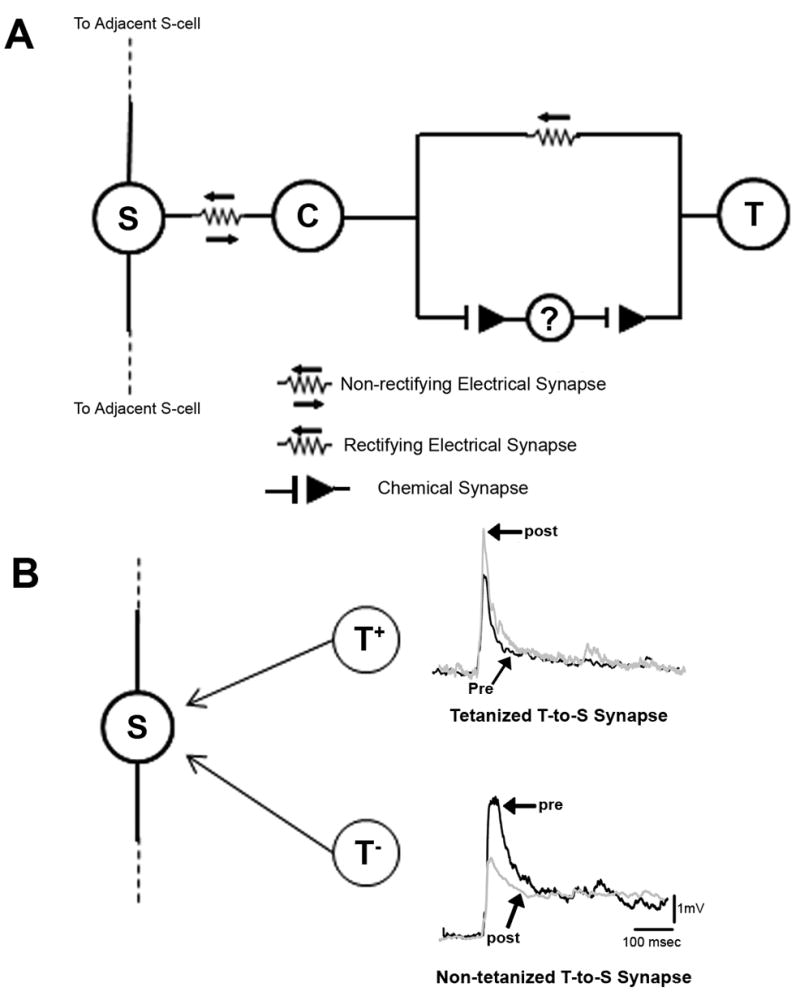Figure 1.

(A) T→S synaptic circuit. The T→S synapse has both a monosynaptic electrical and polysynaptic chemical (glutamatergic) component (Muller and Scott, 1981; Li and Burrell, 2006). The “?” indicates the unknown neuron(s) that mediate the polysynaptic, chemical component of the T→S synapse. Nearly all synaptic input to the S-cell is routed through the coupling (C) interneuron. The S- and the C-cells are linked by a non-rectifying electrical synapse and the level of electrical coupling is so strong that EPSPs elicited in the C-cell are carried to the S-cell with minimal attenuation or delay, acting as monosynaptic EPSPs (Muller and Scott, 1981). The C-cells are not directly recorded from because they are on the opposite (dorsal) side of the ganglion. (B) Changes in T→S EPSP at the tetanized and non-tetanized synapse. Left Diagrammatic representation of convergent inputs by the two T-cells, the tetanized (T+) and non-tetanized (T−), onto a single postsynaptic S-cell. Right Traces labeled “pre” were recorded prior to tetanic stimulation and those labeled “post” were recorded 60min after tetanus. Tetanization of the DP nerve elicited homLTP in the tetanized T→S synapse and simultaneously elicited hetLTD in the non-tetanized T→S synapse (same postsynaptic S-cell, different presynaptic T-cells).
